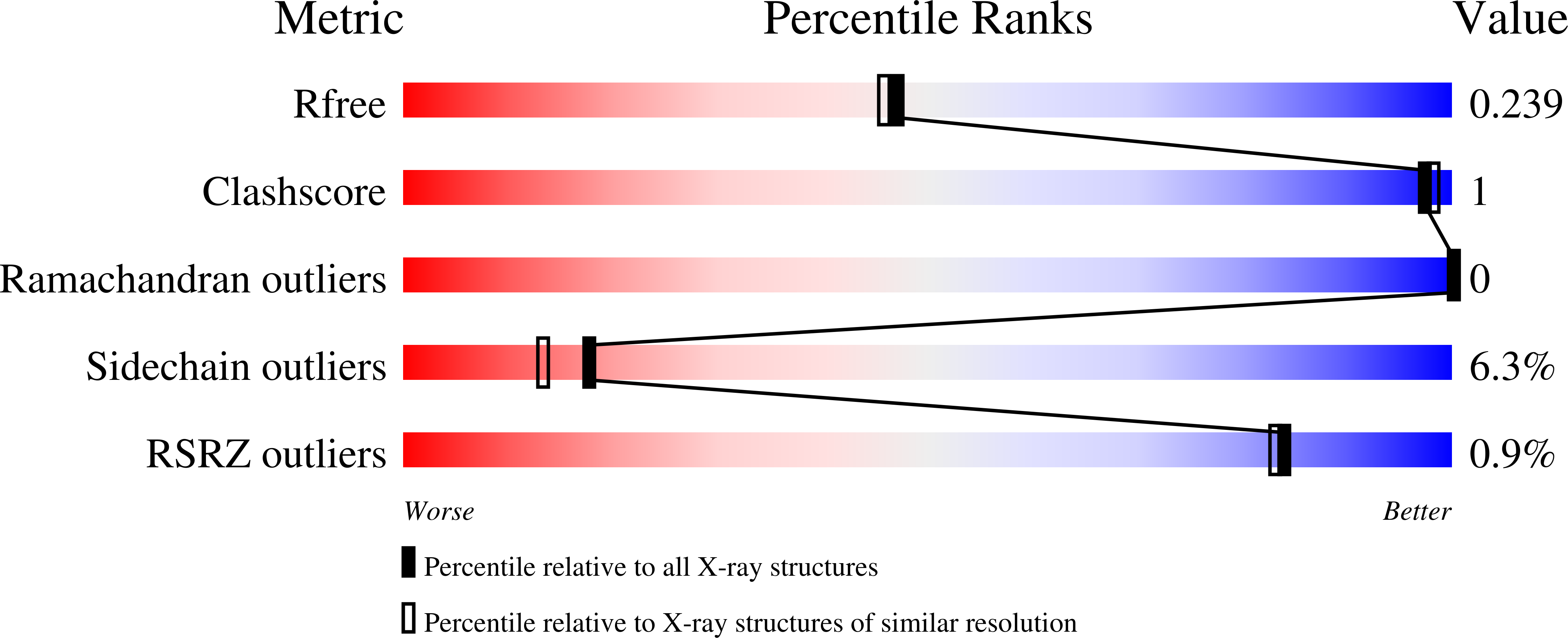Crystal Structure of MltA from Escherichia coli Reveals a Unique Lytic Transglycosylase Fold
van Straaten, K.E., Dijkstra, B.W., Vollmer, W., Thunnissen, A.M.W.H.(2005) J Mol Biol 352: 1068-1080
- PubMed: 16139297
- DOI: https://doi.org/10.1016/j.jmb.2005.07.067
- Primary Citation of Related Structures:
2AE0 - PubMed Abstract:
Lytic transglycosylases are bacterial enzymes involved in the maintenance and growth of the bacterial cell-wall peptidoglycan. They cleave the beta-(1,4)-glycosidic bonds in peptidoglycan forming non-reducing 1,6-anhydromuropeptides. The crystal structure of the lytic transglycosylase MltA from Escherichia coli without a membrane anchor was solved at 2.0A resolution. The enzyme has a fold completely different from those of the other known lytic transglycosylases. It contains two domains, the largest of which has a double-psi beta-barrel fold, similar to that of endoglucanase V from Humicola insolens. The smaller domain also has a beta-barrel fold topology, which is weakly related to that of the RNA-binding domain of ribosomal proteins L25 and TL5. A large groove separates the two domains, which can accommodate a glycan strand, as shown by molecular modelling. Several conserved residues, one of which is in a position equivalent to that of the catalytic acid of the H.insolens endoglucanase, flank this putative substrate-binding groove. Mutation of this residue, Asp308, abolished all activity of the enzyme, supporting the direct participation of this residue in catalysis.
Organizational Affiliation:
Laboratory of Biophysical Chemistry, University of Groningen, Nijenborgh 4, 9747 AG Groningen, The Netherlands.
















